Physical Address
304 North Cardinal St.
Dorchester Center, MA 02124
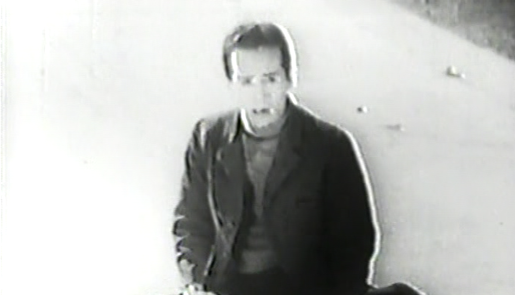
Other Titles: Perspiration (alternative English title); Comedy: Sweat (literal English title)
| Production Company | Nikkatsu Uzumasa (Kyoto) |
| Scenarist | Kobayashi Masashi |
| Cinematographer | Matsuzawa Matao |
| Set Decorator | Ikeda Enjiro |
| Performers | Shima Kōji (Kitayama Heizaemon, a wealthy heir); Yoshii Yasushi (Gembei); Takihana Hisako (Oshizu); Tamura Kunio (Chorotake); Murata Hirotoshi (Senta); Oki Etsuji (Kinzo); Tanaka Haruo (taxi driver) |
| Status | Extant |
| Photography | Black and white |
| Sound | No |
| English Subtitles | No |
| Original Release Date | December 31, 1929 |
| Length | 50 minutes (1500 meters) |
A fabulously wealthy man, Kitayama Heizaemon, wakes up at his manor, attended by his elderly advisors and many servants. All his worldly needs are taken care of during the course of the day, but he is restless, bored and dissatisfied. He is driven to his country estate, where entertainers try to distract him, but they only irritate him, and he starts drinking to excess. At last, horrendously drunk, he runs at full speed out of the estate and down a mountain road, while his entire retinue futilely gives chase.
Having outrun his pursuers, Heizaemon falls asleep by the side of the road. A wandering tramp finds him and exchanges his own ragged clothes for the rich man’s expensive wardrobe (and money) and leaves. When Heizaemon wakes up, he has no cash, no fine clothes, doesn’t know where he is and has no way to get back home. Hungry and tired, he must now, for the first time in his life, earn money to live. He meets a sympathetic young woman, Oshizu, and through her help he gets a job at a construction site.
At first he is overwhelmed by the unaccustomed demands of physical labor, but he eventually bonds with the other workers and deepens his friendship with Oshizu. The construction foreman, who is also attracted to Oshizu, doesn’t like this at all and arranges an “accident” in which Heizaemon is seriously hurt. Meanwhile, Heizaemon’s advisors proceed with the building of the family mausoleum, which they had planned with the young master’s approval prior to his disappearance. Back at the construction site, the foreman tries to rape Oshizu, but Heizaemon rises from his sickbed and attacks the foreman.
Heizaemon is then recognized by his advisors, and he realizes that the building his construction crew had been working on all along was… his own mausoleum. Restored to his former wealth, Heizaemon rewards the workers (except the foreman) with extra pay. He is later shown happily working on the grounds of his estate as Oshizu (to whom he is now, presumably, married) wipes the sweat from his brow.
Shima Kōji was, except for Kosugi Isamu, the actor most frequently associated with the films of Uchida Tomu during his prewar period. According to the Internet Movie Database, he performed in 18 of the director’s movies from 1927 to 1937, including The Naked Town (Hadaka no Machi, 1937, lost), which was ranked fourth in that year’s Kinema Junpo poll. Shima later became a director in his own right. In the West, his best-known film as director is the mediocre Golden Demon (Konjiki yasha, 1954), which was nevertheless given a mainstream U.S. release in 1956. He died in 1986 at age 85.
Takihana Hisako, in addition to this film, was cast in at least six of Uchida’s prewar films, including as the middle-aged wife of the tragic protagonist of Unending Advance (Kagirinaki zenshin, 1938), despite the fact that she was only about 30 at that time. In the postwar era, she had a busy career as a character actress, and is perhaps best known for her work in Naruse Mikio’s 1950s films. During that time period, she also appeared in Uchida’s The Eleventh Hour (Dotanba, 1957). She died at the age of 78 in 1985.
Kobayashi Masashi was a prewar screenwriter (not to be confused with director Kobayashi Masaki, who began his career in the 1950s). For Uchida, he wrote at least four films in the late 1920s and early 1930s period: this movie, the acclaimed A Living Puppet (Ikeru ningyō , 1929), the two-part Jean Valjean (Jan Barujan, 1931) and Miss Nippon (Misu Nippon, 1931). Except for this film, all of them are lost. He would later be replaced as Uchida’s chief screenwriter by Yagi Yasutarō.
(Note: The poor quality of the screenshot images for this film included here reflects the quality of the source print, which is extremely indistinct and badly damaged.)
With the exception of Police Officer (Keisatsukan, 1933), Sweat, a comedy he released in 1929, is the only complete, surviving silent feature1 directed by Uchida, and (again, except for Police Officer) his only complete work of feature length from the entire prewar era. The film was made at the time when the keikō eiga, or “tendency film” genre, had become a big trend in Japan, and its politics reflect that trend. Tendency films, which were made, surprisingly, not by independents but by the major commercial studios, strongly advocated left-wing ideas and values.
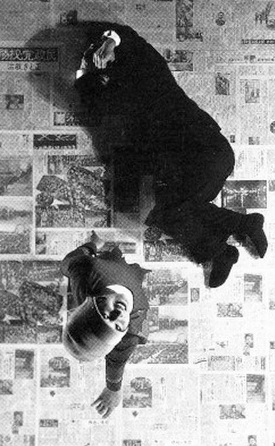
The existence of this type of film would seem, at least at first glance, to signify considerable courage on the part of the filmmakers in question, since the Public Security Preservation Law of 1925 not only outlawed communist and socialist parties, but all political thought that could be considered Leftist, or even “leftish.” Films of the day usually counted as tendency films include Itō Daisuke’s jidai-geki classic Man-Slashing, Horse-Piercing Sword, aka, The Sword of Enchantment (Zanjin zanbaken) from 1929, as well as two modern films released in the same year: Metropolitan Symphony (Tokai kokyogaku) by Mizoguchi and Uchida’s own satire A Living Puppet (Ikeru ningyō), now lost.
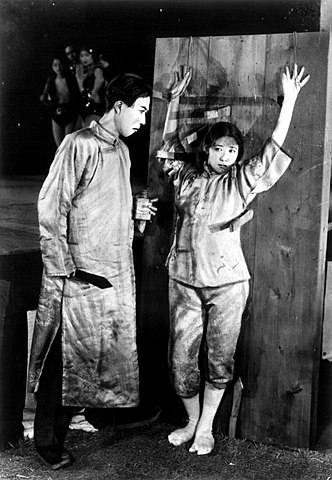
But the ultimate tendency film was one released in the following year, 1930: What Made Her Do It? (Nani ga kanojo o sō saseta ka), directed by Suzuki Shigeyoshi, a film that ends with its exploited, brutalized and beleaguered heroine burning down a church!2 That movie was a box-office smash, but it turned out to be a Pyrrhic victory for the liberal wing of the movie industry, because its popularity so alarmed the government that it prompted unprecedented scrutiny of the film industry by the authorities.3
This started Japanese Cinema down a path leading to total censorship of movies, ending with the notorious Film Law of 1939, after the passage of which not only finished films but initial scripts had to be submitted to the government for approval.4 Beginning only a few years after the height of the tendency film craze, and definitely by the time of Pearl Harbor, all the tendency film directors (including, unfortunately, Mizoguchi and Uchida himself) would be making films explicitly or implicitly glorifying militarism and empire.
According to Joseph Anderson and Donald Richie, the tendency film “did much in teaching the Japanese cinema how to think for itself.”5 Others are not so complimentary. Yomota Inohiko regards the genre as little more than a passing fad that filmmakers of the time indulged in: “For many Japanese cineastes, any kind of political ideology amounted to little more than a surface decoration. Once they had trifled with the newest ideology for a bit, they quickly moved on, switching to something else.”6
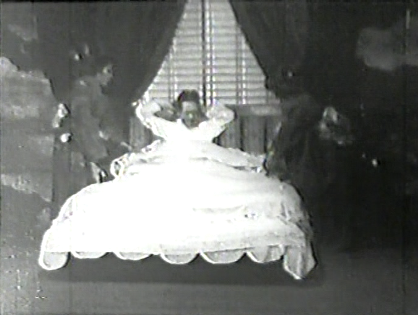
Examining the ideology of this film, I find nothing in it that can be interpreted as even vaguely revolutionary, or even truly reformist. The rich man is mocked, but in a way that suggests that his foibles make him endearing and human, like the rest of us. The common workers, rather than being depicted as alienated, as one would expect of a left-leaning filmmaker, are shown to be, despite their hard lives, better off than the rich man, because more grounded and rooted in community. (There is nothing here remotely resembling the savage denunciation of economic exploitation expressed in Uchida’s postwar film, Hero of the Red-Light District.) And in the end, the tycoon, having walked a mile in the shoes of the proletariat, sees the light, and amply rewards the workers for their toil: capital and labor reconciled.
If this is a tendency film, it tends towards an ideology that none but the most paranoid government would have perceived as threatening. But the State was paranoid, from the fiercely anti-Communist Emperor Hirohito on down, and so even lighthearted critiques of the class system such as this one would eventually die out, to be revived only after the war.
I don’t really have a great deal to say about this silent comedy,7 except that, though the print is dark and blurry and thus hard to watch, and despite the fact that it lacks English subtitles for the Japanese intertitles, its visual gags make it intermittently very amusing. Not surprisingly given its genre, the movie is very American in style and tone. Several commentators have detected the influence of Lubitsch here, but the film mostly plays like a standard Harold Lloyd comedy of the time (though it was in fact Buster Keaton rather than Lloyd who most frequently played rich nitwits like this film’s hero).
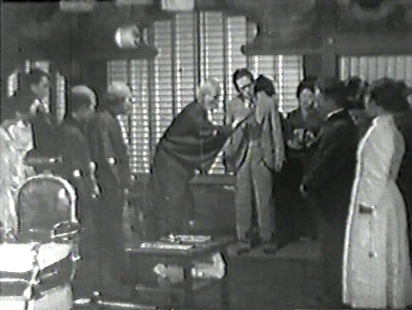
My favorite sequence of the film is the first quarter-hour or so, showing the spoiled and very bored protagonist as a captive of his own wealth. Uchida very precisely choreographs the movements of Heizaemon’s sycophantic servants and staff, all of whom have been trained to serve his every wish and whim, so that they move like clockwork dolls. Uchida very cleverly (and impressively) uses technical tricks to suggest Heizaemon’s increasing drunkenness, at one point employing a hand-held camera to depict the scene in which the hero, lurching towards a stage set up for his amusement, knocks over the majordomo.
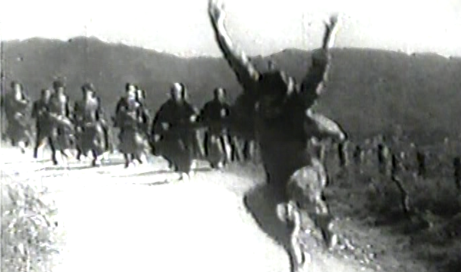
At last, Heizaemon revolts and escapes his “jailers” by running out of the country estate and down a mountain road. The scene is so funny precisely because it really feels like a release from captivity, and the actor, who had been shrewdly underplaying his role up to that point, doesn’t so much run as dance down the path: the happiest man in the world. And the fact that it takes place against a spectacular rural landscape makes it even funnier.
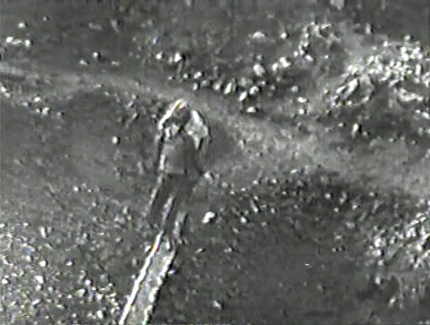
The rest of the movie isn’t quite up to that giddy beginning, but there are some very amusing moments. Having gotten both his money and his suit stolen, and with no way of getting home, the hero, who’s never worked a day in his life, must find a job. He wanders through the countryside, a closeup of his weary legs symbolically intercut with the image of a swinging pendulum. Luckily, he meets a nice young lady, Oshizu, who pulls strings with the local construction foreman (who has a crush on her) to get the penniless young vagabond a position. However, Heizaemon takes one look at the men, his co-workers, toiling in the pit at the construction site and, utterly horrified by the appalling reality of physical labor, tries to run away, so that Oshizu has to pull him back by force.
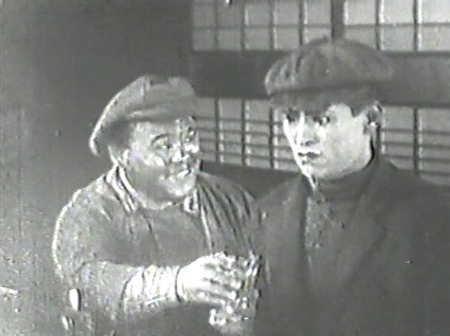
Though the movie peddles a thoroughly conventional moral about the redemptive power of hard work – and of the love of a good woman – Uchida has a light enough touch not to make this already stale (for 1929) message overbearing. And for those with knowledge of the director’s biography, there are fascinating parallels between the hero’s ludicrous fall from grace and Uchida’s own deliberate rejection of his class privileges following the Great Kantō earthquake of 1923, during which he, despite his early modest success in the film world, mingled happily with the working class and even joined a touring theatrical troupe. An interesting side note is that during his “lost” years in China after the war, Uchida, by that time a famous middle-aged director, went to work for a time in a coal mine as a common laborer, which may well have brought back ironic memories of the comedy he’d made many years before.
Alexander Jacoby has written that this film “anticipated the sceptical attitude to class distinctions of [Uchida’s] later work.”8 This is, on the face of it, true, and it’s possible to perceive in the empty-headed millionaire Heizaemon a very rough sketch for the neurotic young samurai Sakawa in Uchida’s first postwar masterpiece, A Bloody Spear at Mount Fuji (1955). But the tragic consciousness that Uchida brought to his depiction of that complex character makes the later film an incomparably deeper and richer experience than Sweat, and demonstrates the vastly greater artistic maturity of the older filmmaker.
As imitation Hollywood slapstick, Sweat is not bad at all. Unfortunately, though, it’s also not really better than “not bad.”
A conventional and lightweight, but often quite amusing slapstick comedy that can be enjoyed even without subtitles.
Senses of Cinema (Alexander Jacoby) [Brief mention of the film]
Wonders in the Dark (Jared Dec) [Detailed discussion of the film in the context of Uchida’s career]
[…] Extant3 […]
[…] Sweat (Kigeki: Ase, 喜劇・汗), 1929 […]
[…] to be associated with the keikō eiga (“tendency film”) movement of the time. (See my review of Sweat for a detailed description of this short-lived […]